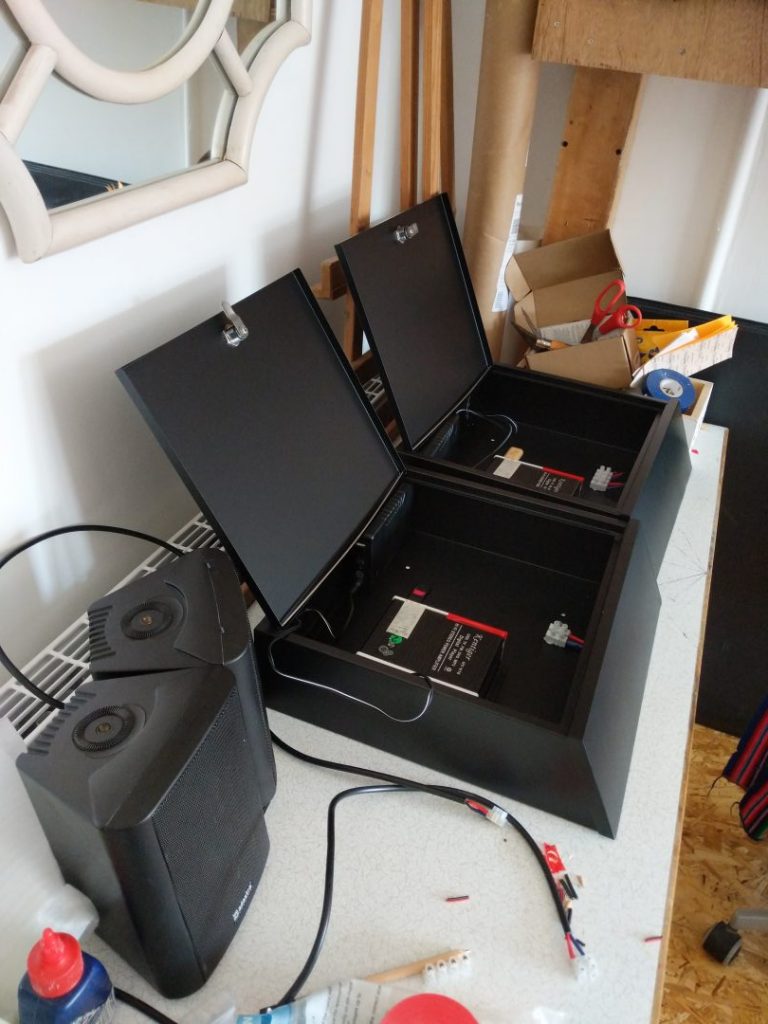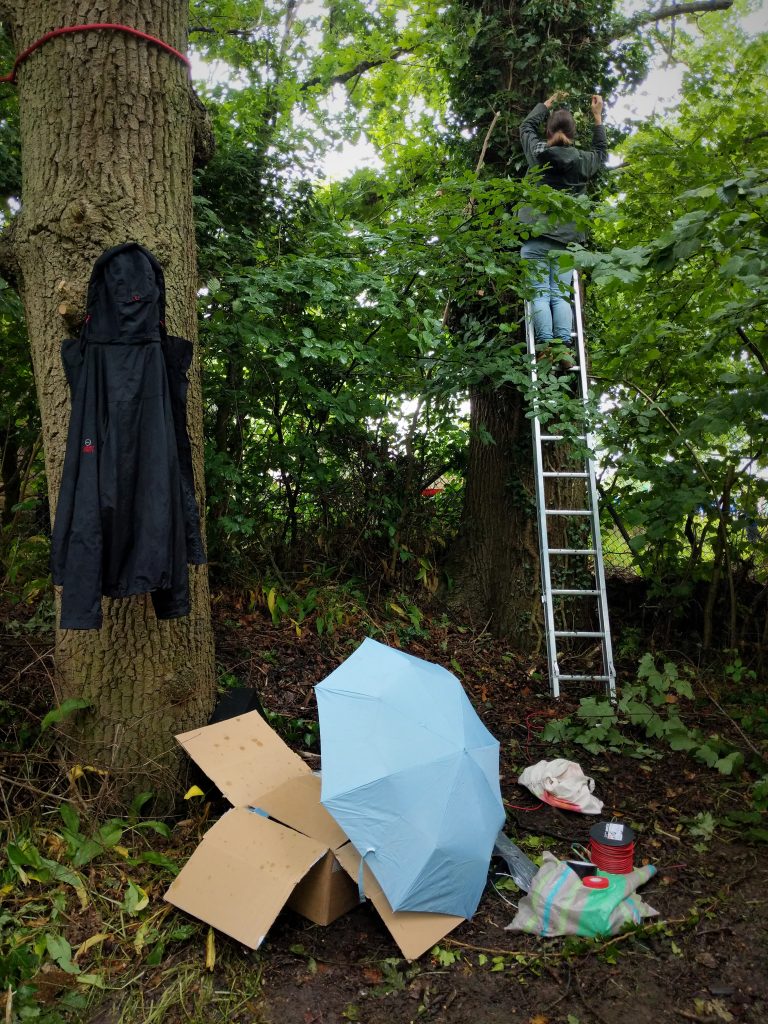It always seem to be that I get asked about how to get sound outdoors for art installations. Whether it is a soundscape, speech or music, bringing audio into outdoor environment let’s you shift the experiences and feelings of your audience and provides another creative aspect for you to play with as an artist.

In the past when working on extreme budgets I have worked in rigging up mp3 players to little battery powered PC speakers. Although they do the job for a day event, there needs to be nice dry weather, relatively low volumes and no danger of people fiddling with and destroying the kit. I was approached to find a sound solution recently to Beccy McRay’s “When the Oak Spoke” installation in Wadsworth. Working with a storyteller and sound artist, McRay created audio interventions which would be embedded in three of the trees on the site, each of which had its own personality. The installation was outside in a publicly accessible park with no invigilation and would be in place for three weeks. It needed to be secure, run without supervision, without any mains power and have enough volume to be heard over the rustling of the tall oaks in the grove, a nearby playground and a road. We could have hired kit in but it would have been more expensive (budget was super tight so a penny saved made a big difference!) and we would have had to hand everything back at the end. This way, we saved money and the artist got a set of kit that could be used for touring the work or new pieces.
I thought I’d share my approach with others so that they can build something quickly and cheaply if that they can add to installations and provide high quality sound. It isn’t intended to be a step by step guide but if you have a little knowledge on sound kit you should be able to run with it and adjust it to your own needs. All in all, the kit came to about £250…
Here’s the kit I used:
- Waterproof speakers x 4
- Mini-amplifiers with USB mp3 input
- Speaker cable
- Steel cable
- 12v Lithium battery packs x2
- Steel lockable postboxes x2

The small amps are perfect for applications like this. They contain a whole host of inputs, can play from a USB or SD card and can auto start on powering up and loop through their tracks. They draw a pretty tiny current too so it meant that they could powered for days from a single battery. These Lepy-style d-class amps are used all over for mini-sound rigs – if you have ever been out on a Critical Mass ride in London, undoubtedly you would have heard one of these rigged up as a sound system.

The batteries were 12v lithium 6000mAh packs which had an indicator for the amount of power remaining on them. They drove the amp easily and for those looking after the installation, it was easy enough to take them out of the boxes every few says and give them a charge overnight to keep them running.
Inside the boxes was pretty simple. I drilled holes in the bottom of the box for running the speaker cable out of it and widened the fixing holes to take the thicker security cable that was going to add another layer of security outside. To speed up the install onsite, I pre-wired the amp to little cable junctions so that there wouldn’t be any fiddling around behind/up in trees whilst we were setting up.

The four installed speakers were weatherproof, two way and 30w. As keeping the power draw to a minimum was essential to eek out of the life of the batteries, I chose the most efficient ones I could find for the price, with SPL at 89db. They came with mounting brackets and switchable impedance and were really versatile in getting them positioned and sounding right.
On the day of the install, quite naturally, it rained. Heavily. The night before was a huge storm across the south of England so we were dreading the worst when we arrived on site. Luckily the oaks has survived apart from shedding a few twigs and leaves. Making sure everything was waterproof and secure had paid off for peace of mind.

